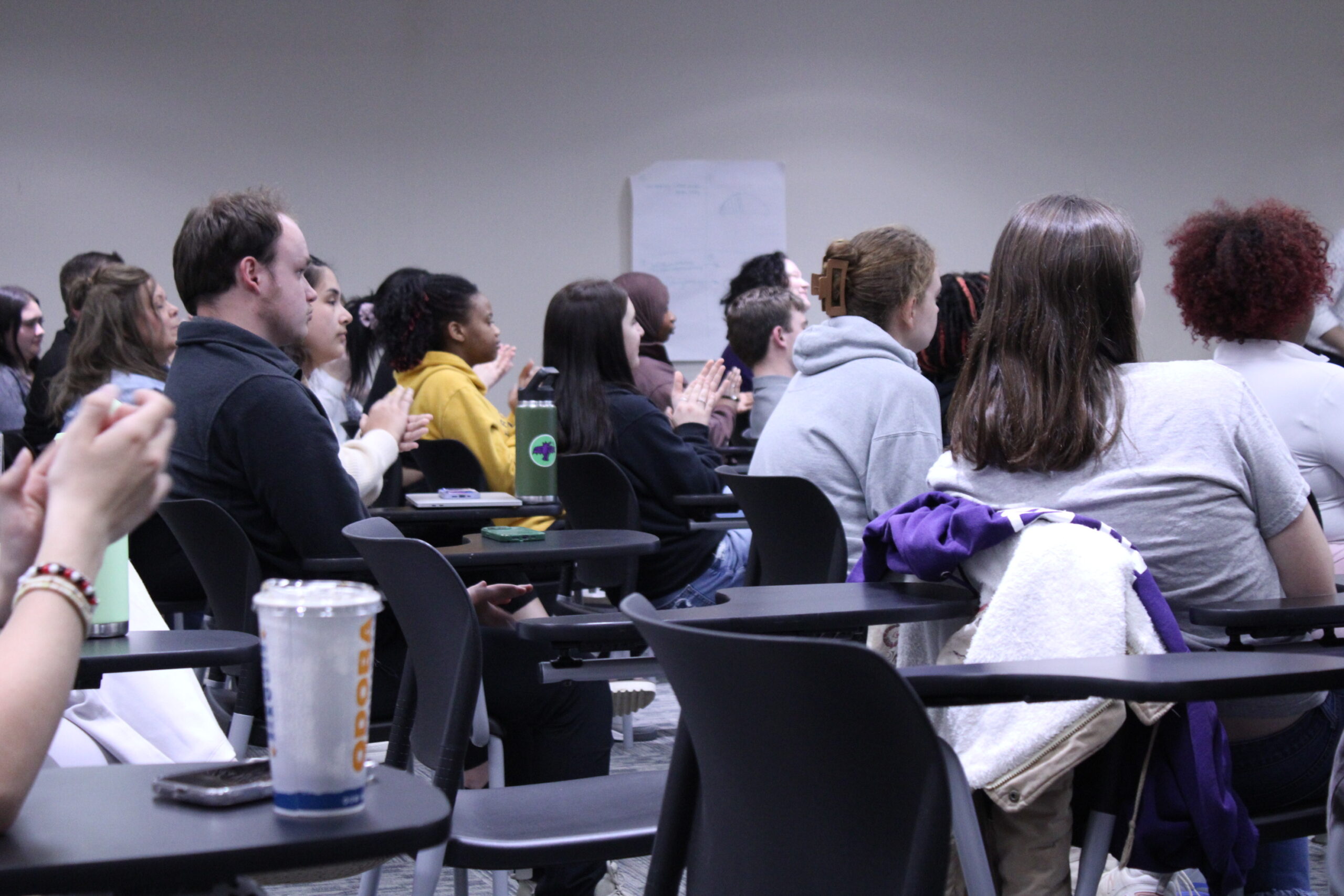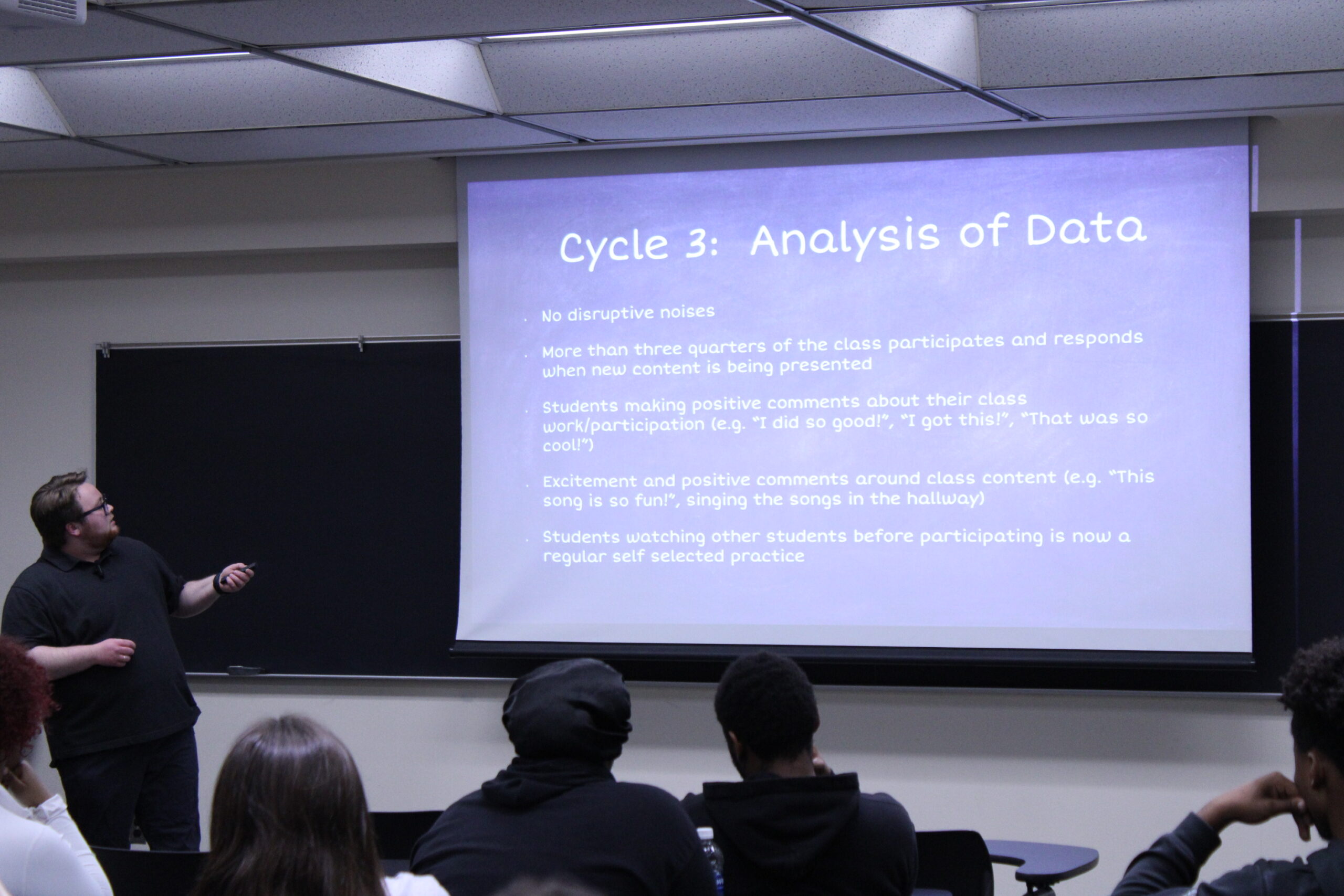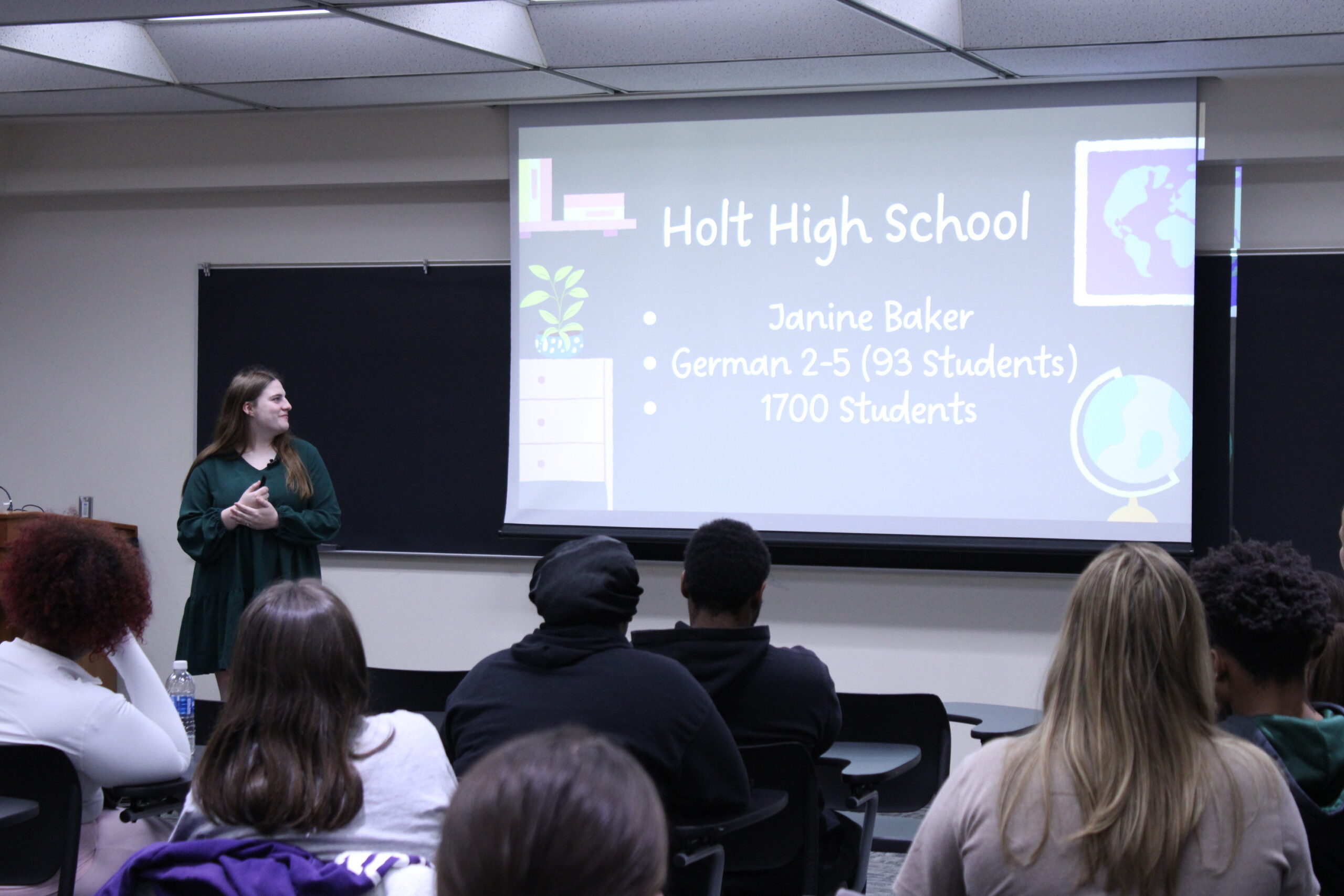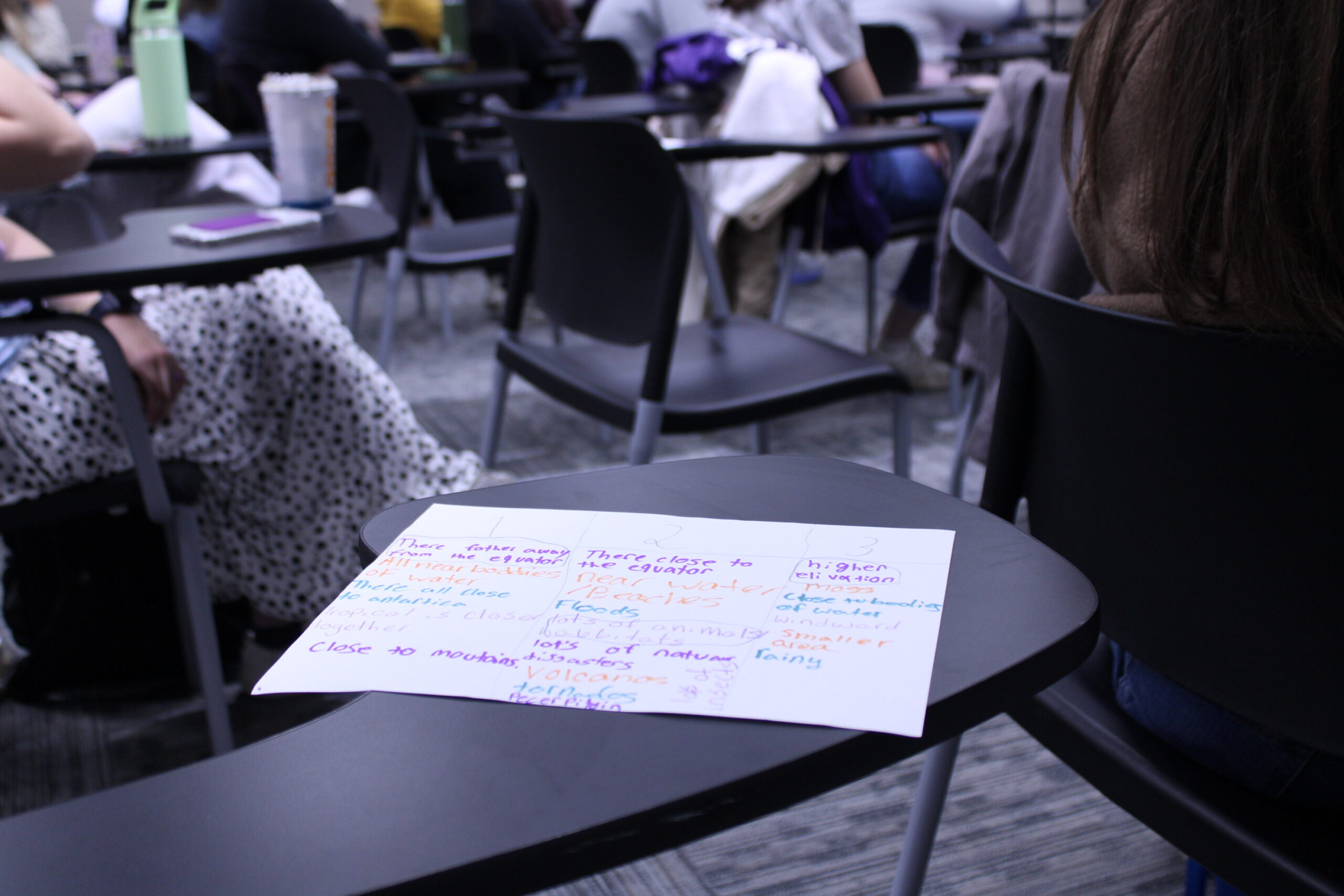
How does a student teacher keep their classroom engaged, regulated and efficient? Through capstone projects identified and reported on by eight seniors throughout their placements as student teachers.
To address these situations, Fenton senior Liberty Eaton said student teachers tried methods of their own design in their classrooms. On Wednesday, these students came together with fellow students, faculty and supporters to report their results.
“I had a lot of unkind behaviors in my classroom, so I introduced the kindness fairy,” Eaton said. “The kindness fairy lives in a little wooden door in the classroom, she just watches out for acts of kindness in the classroom.”
The kindness fairy would leave pompoms on students’ desks when they performed acts of kindness, Eaton said, which they could then add to a class jar in exchange for small prizes and rewards. The kindness fairy, according to Eaton, did its job.
“Just today, I mentioned that I needed to blow my nose during a lesson, and then I turned around and there was a kid holding a tissue for me,” Eaton said.
Other students’ projects included research targeting methods of studying vocabulary, arranging desks to encourage student participation and creating “squads” named after animals to assign groups of kindergartners to specific cleanup tasks.
In his elementary general music classroom, Glenview, Ill., senior Louis Kramer said seven of his students frequently were removed by his mentor teacher from the classroom when they “consistently” did not participate.
“I began to ask myself, how can I help students remain regulated and participating for all of class?” Kramer said.
Kramer said he began with observing students’ behavior throughout the lesson and having individual “discussions” with students in the hallway to learn more about their needs. Along with this, Kramer began presenting new information to the class with “intentional positive energy and enthusiasm.”
“I like to dance around the room, and if there’s a kid that’s not doing anything, I very aggressively dance at that child and then eventually they kinda get into it,” Kramer said. “We’re all going to look a little silly, and that’s okay.”
As a result, all of Kramer’s seven students of interest “were excited about content, increased eye contact, dancing while singing and playing instruments.”
Kramer’s emphasis on helping students regulate their emotions and behavior merged with a focus on helping students feel safe participating in large group activities, and ensuring that they understood that “we’re all doing this together.”
“If we jump on them right away, it becomes a confrontation,” Kramer said. “They’re not trying to do the wrong thing, they just don’t understand.”





Leave a Reply